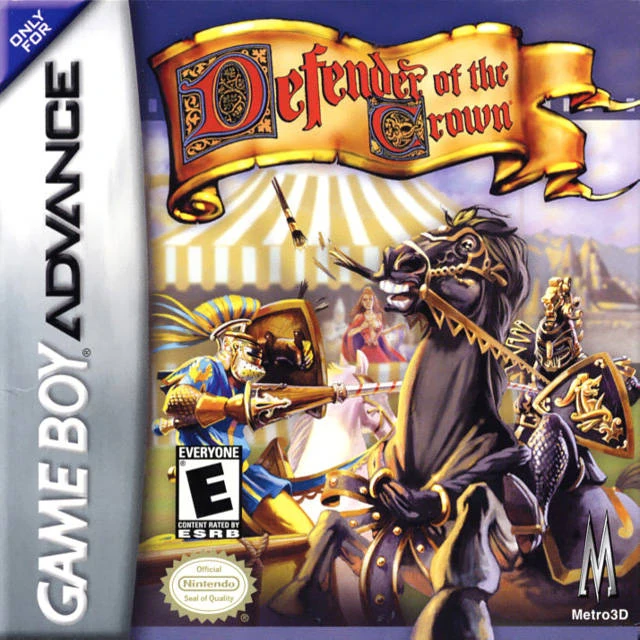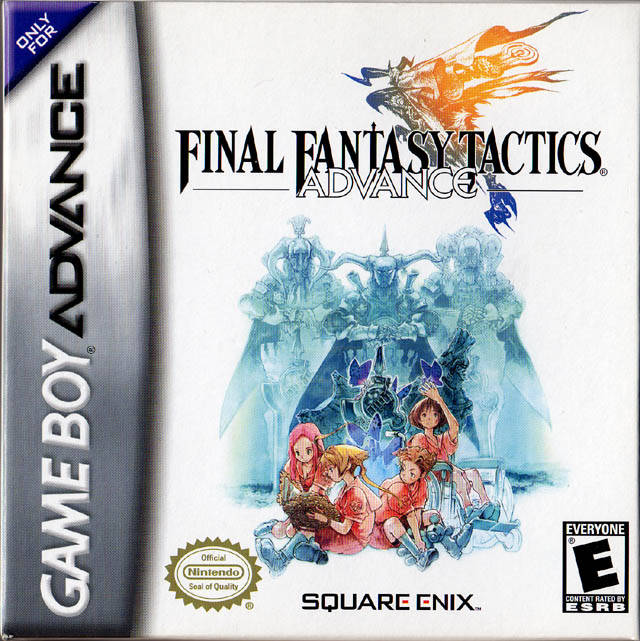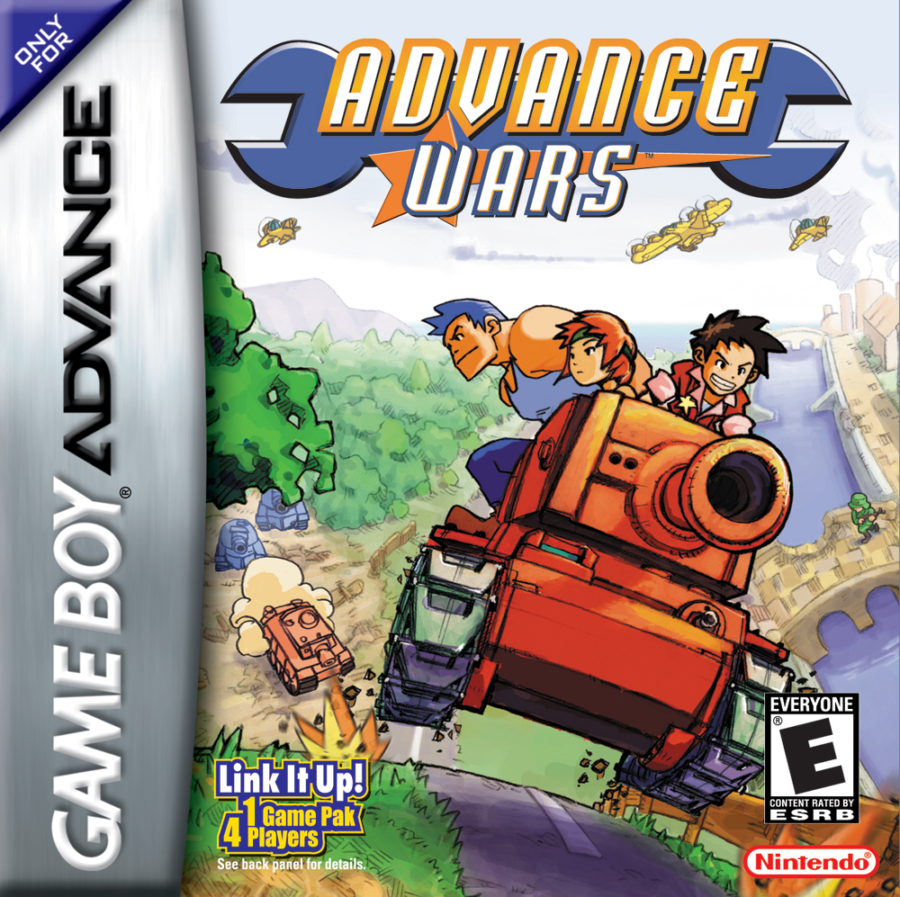The Game Boy Advance (GBA) is a haven for both revivals and swan songs of strategy/tactical RPGs. It stands as the final platform to host an original Tactics Ogre title and the very console that brought back Fire Emblem to the forefront. Naturally, these two iconic titles are featured in this list, but where do they rank among the best strategy games on the GBA? Read on to know where they rank in this list of seven of the best strategy games on the GBA.
Best game boy advance strategy games
7. Defender of the Crown

Defender of the Crown, originally a beloved medieval strategy game on the Commodore Amiga, finds a new home on the GBA, delighting old fans and newly-initiated strategists. This game brings about the turmoil of medieval England to life as players take on the role of a Saxon Knight seeking to unite the kingdom, find the stolen crown, and repel the Norman invaders with the help of Robin Hood. The most striking characteristic of this game is its faithful adaptation of the Amiga version.
The aural experience on the GBA is unfortunately gimped to its small speakers. Nevertheless, Defender of the Crown’s audio complements the medieval theme with its epic music and fitting sound effects. The game’s main theme is incredibly catchy. Gameplay centers on turn-based strategy, with players capturing territories and castles from rival lords in a manner reminiscent of Risk. The game encourages an aggressive and decisive playstyle, resulting in intense and fast-paced confrontations.
Defender of the Crown offers entertaining diversions with its mini-games, including tournaments, jousting, and swordfights. These additions provide variety and challenge to the overall experience. However, the game’s pacing suffers slightly due to arbitrary limitations on performing certain actions within a turn.
Defender of the Crown for the Game Boy Advance remains a charming and addictive strategy game that successfully pays homage to its Amiga roots. The game’s compelling mechanics, captivating visuals, and fitting audio is a testament to its state. Whether a longtime fan or a newcomer, players are sure to enjoy this timeless gaming experience.
6. Mech Platoon

Mech Platoon for the Game Boy Advance offers an engaging real-time strategy experience reminiscent of Command & Conquer RTS games. Set in a universe where three factions battle for control over vital resources, players lead robotic warriors on diverse battlefields as part of the Leon, Minos, or Trampler factions. While the storyline may not be entirely original, it provides ample missions to keep players entertained.
The game is equipped with vibrant and varied graphics, making good use of the GBA’s screen and offering different world types for battles. The 2D isometric view, with 3D isometric terrain and 2D units and buildings, adds to the visual appeal, and the rendered video at the beginning is well executed as well.
Mech Platoon’s strategy-based gameplay is where its at, with its innovative building system and enjoyable skirmish mode. The robot-building system stands out, allowing players to discover technology to create new robot combinations of arms, body, and legs. Examining wreckage and building a laboratory unlocks parts, and the ability to load the database in skirmishes adds replay value. Resources play a crucial role, and players must efficiently manage three types to build a successful base.
Mech Platoon deserves more recognition after all these decades. As one of the first real-time war games on the GBA, it set a high standard for the genre. However, players should beware of its addictive nature, as it may consume their time and distract them from other tasks.
5. Yu Yu Hakusho: Tournament Tactics

Yu Yu Hakusho: Tournament Tactics offers an engaging tactical experience, following the Dark Tournament saga of the Yu Yu Hakusho storyline. Players get to control many characters, both allies and enemy bosses, strategically positioning them to outwit their foes in each stage. With careful planning, players can utilize powerful attacks that target multiple enemies at once, and as they level up, skill points unlock additional abilities for their characters.
This game sets itself apart from the Tactics Ogre and Final Fantasy Tactics of the world by offering limited numbers of units, as reflected by the cast of the anime. Each character comes with a unique set of moves and abilities, making team composition a crucial aspect of gameplay. From brawlers like Yusuke, who relies on spirit energy for powerful attacks, to characters like Kuwabara, who offers a more well-rounded approach, each member adds depth to the roster. Hiei’s speed and lethal moves make him ideal for eliminating weak enemies, while Kurama’s poison ability provides a steady drain on enemy health.
The game features various monsters, many taken directly from the show, and players must manage spirit energy, which is essential for executing most moves. The countdown-based system for character turns adds strategic depth, as some moves require more time to execute. Do not be discouraged by the licensed nature of the game. Not being a fan of the anime will not affect anyone’s enjoyment of Yu Yu Hakusho: Tournament Tactics as long you are a strategy game fan.
4. Final Fantasy Tactics Advance

Upon the release of Final Fantasy Tactics Advance, some fans of the original game threw thermonuclear tantrums. This new installment wasn’t a direct sequel to the beloved Final Fantasy Tactics, and it seemed to present a milder version of the revered title.
The developers chose to simplify the gameplay mechanics in the GBA entry, a decision that ultimately proved to be beneficial. The previous installment had suffered from excessive complexity, and players welcomed the refreshing change in Final Fantasy Tactics Advance. Despite its streamlined approach, the game managed to retain a satisfying level of complexity, ensuring that tactical enthusiasts would still find plenty to engage with.
The art style also received a makeover, preserving certain elements from the PlayStation version while infusing it with a unique spin. This artistic choice added to the game’s charm and helped distinguish it as a standalone entry in the Final Fantasy franchise.
Final Fantasy Tactics Advance struck a delicate balance between challenge and charm, capturing the hearts of both new and returning players. By avoiding overwhelming intricacies, it offered a more accessible and enjoyable tactical experience without compromising on the core elements that made the series beloved.
3. Advance Wars

This is not the first game of its kind in the series. The saga began with Famicom Wars, which, at its time, was considered groundbreaking. Following that, Super Famicom Wars took the series to new heights and was hailed as the pinnacle of the franchise. Subsequently, Game Boy Wars, developed by HAL, didn’t quite manage to live up to the high standards set by its predecessors. Finally, the awaited Advance Wars, also known as Game Boy Advance Wars, emerged onto the gaming scene. While some aspects from the Super NES version were scaled down, it remains an exceptional game worthy of recognition.
Graphically, Advance Wars delivers precisely what one would expect from a turn-based strategy game by Nintendo. Despite being on a portable system, the game exhibits an impressive level of detail and colors that make the experience visually pleasing. The character designs boast an anime-esque aesthetic, lending an air of seriousness to the game, reminding players that this is indeed a war game, with no characters merely “fainting” when defeated—they die. Explosions and special effects are well-crafted, adding depth to the gameplay.
Players control an army whose mission is to conquer the opposing force or annihilate their headquarters. While the single-player mode offers some semblance of a story, it may not be as engaging as one might hope. Players begin as officers and progress through the ranks while receiving missions from a female character. The primary adversary is a general, and while battles with him are frequent, the plot rarely veers into surprising twists.
At its core, Advance Wars boasts a unique and straightforward real-time strategy gameplay. Unlike other titles that delve into complex upgrade systems and special abilities, this game embraces simplicity. The only factors players need to consider are a unit’s attack power and range. Winning a battle involves either eradicating the enemy forces entirely or capturing their headquarters.
Advance Wars is undeniably one of the finest games ever created. Despite the tragic events of 9/11 affecting its sales (and now its remaster on the Nintendo Switch is being dampened by the war between Russia and Ukraine), critics and gaming magazines alike praised its excellence. The game successfully achieves a perfect balance between simple, addictive gameplay and impressive strategic depth. The sequel is also good, but the first one is more organic.
2. Fire Emblem

Fire Emblem is a once seemingly nonexistent series in the US that has now gained popularity, thanks in part to characters like Marth and Roy appearing in Super Smash Bros. Melee. This strategy RPG, developed by Intelligent Systems, is considered the pioneer of the genre and has a unique gameplay approach.
Unlike other strategy RPGs with large-scale maps and battalions, Fire Emblem focuses on individual units as heroes. Each character is a single unit, and the game combines elements from Advance Wars and Tactics Ogre. Players command a group of heroes armed with swords, bows, and spell-books, engaging in strategic battles on a grid-based map.
The gameplay demands careful planning and strategy, as characters can easily perish in battles. A character’s death is permanent, and the game saves after every action, making it impossible to undo mistakes. This adds a layer of challenge and forces players to be cautious with their essential characters.
The story is another highlight of the game, with a personal and engaging narrative. It starts with a simple quest to find a person close to the main character but gradually becomes more serious and epic. The presentation is excellent, with captivating anime portraits, hand-drawn CG pictures, and a strong vocal soundtrack. The soundtrack is one of Nintendo’s best, with high-quality compositions despite the limitations of the GBA’s sound capabilities.
Fire Emblem is a challenging yet enjoyable strategy RPG with a deep and atmospheric story, a cast of memorable characters, and an excellent presentation. It’s a gem of a game that has lost its way in the more recent entries with all the romancing and fanservice.
1. Tactics Ogre: The Knight of Lodis

Tactics Ogre: The Knight of Lodis follows the journey of Alphonse and his comrades to investigate mysterious occurrences on the island of Ovis. As they arrive, enemy troops attack and the group is thrust into battles and ambushes, leading to a series of events that change Alphonse’s destiny.
The game’s turn-based battle system is excellently designed as it’s a refinement of the Tactics Ogre formula. Managing a platoon of soldiers from equipping weapons and armor and choosing their classes is very much perfect in a portable setting.
The graphics in The Knight of Lodis are impressive, with well-designed characters, maps, and battle animations. Spells and weapons are visually appealing, and the game’s water level and environmental effects are great. The sound complements the gameplay, with appropriate battle sounds and engaging music.
Tactics Ogre: The Knight of Lodis offers replay value through its multi-path storyline, allowing players to make different choices and experience alternative outcomes. Quest mode and the ability to battle friends enhance replayability, with the option to exchange items and characters. It may not have the girth of Final Fantasy Tactics and Tactics Ogre, but The Knight of Lodis’ leanness is its greatest strength. It may be a long-winded affair but it’s not going to burden the player with bloated content and extraneous intricacies. In short, it is simply the best pocketable Strategy-RPG.
